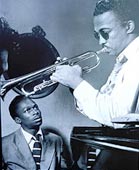
JazzWax tracks: You'll find the tracks mentioned above on
This story appears courtesy of JazzWax by Marc Myers.
Copyright © 2024. All rights reserved.

This story appears courtesy of JazzWax by Marc Myers.
Copyright © 2024. All rights reserved.
< Previous
Guitar Masters Festival Presents Worl...